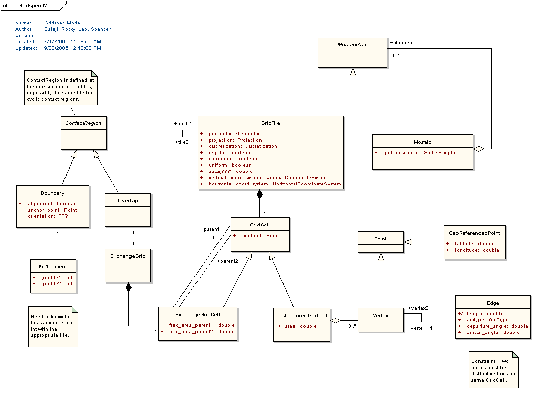The grid specification proposed serves two purposes: in various contexts, these purposes have been described as descriptive and prescriptive; semantic and syntactic; or discovery and use metadata. The first purpose serves up information for human consumption: attaching this metadata to model output will enable a user to ask several key questions to understand its content, find out whether indeed the dataset meets a given scientific need. The second purpose is to delve further and perform operations upon datasets: as stated in Section 1.3, these include commonly performed scientific analysis and visualization: differential and integral calculus on vector and scalar fields; and transformations from one grid to another. The intent is that given the existence of a standard representation of grids, many of these operations will be abstracted into commonly available tools and analysis packages, and in fact may be available as web services.
An abstract representation (UML diagram) of the first class of metadata is shown in Figure 21. It is expected that this content will eventually appear as part of a standard XML schema to be applied to data discovery. The content of this schema will be part of extensible controlled vocabularies to be defined by the appropriate domain specialists.
The second class of metadata is far more detailed (Figure 22). This UML diagram shows schematically how locations, distances, areas and volumes of grid cells are conceptually linked into a structure culminating in a grid mosaic. While also in principle represented by a schema, these metadata are likely to be large in size and stored in datasets in some standard data format, netCDF being the canonical example shown here.

|
It is possible to deduce the semantic content from the syntactic: for instance, one could work out whether a model used a C-grid by comparing vector and scalar field locations. Nonetheless, it would be recommended and probably mandatory to include the very useful semantic descriptors. Validators could be used to address the consistency problem and ensure that the redundant information was indeed correct.
The draft specification, accompanied by prototype tools for producing and using some example gridspec files, will be released to the CF community in early 2007.